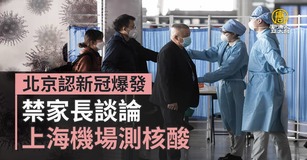【新唐人2011年5月19日訊】今年,是中共發動“文化大革命”45週年。這場舉世公認的“十年浩劫”,連中共自己也承認“給國家和人民帶來嚴重災難”。但大陸首家民間成立的「文革博物館」因為生存壓力巨大,前景堪憂,中共當局不但不給予應有的支持,反而施加各種壓力,為甚麼這樣呢?請看報導:
中國第一家民間「文革博物館」,坐落於廣東汕頭市澄(音: Chéng)海區的塔園風景區。由原汕頭市常務副市長彭啟安經過多年奔波,於2005年創辦落成。因為中國沒有官方的「文革博物館」,這座博物館也成為了中國首家「文革博物館」。
塔園「文革博物館」因為對文革的真實記錄和控訴,曾經引起媒體的高度關注。園區大門刻有已故前廣東省委書記任仲夷的題詞:“要以史為鑑,千萬不要讓文化大革命的悲劇重演。”
而據香港《明報》的報導,6年之後的今天,塔園「文革博物館」因為來自各方的壓力、面臨很多困難,已經變得十分冷清。博物館的建設至今也沒能獲得當地政府的正式認可,隨時可能被認定為“違章建築”;官方的地圖上也沒有博物館的標記,沿途沒有指路牌。即使進入塔山風景區,導遊圖上也只有“文博館”3個字,很難令人想到這就是全國首家「文革博物館」。
已是80歲高齡的彭啟安,因為後繼無人,仍然是「文革博物館」的主要守護者,他表示:當局不敢給「文革博物館」正名,一切都很難運轉。彭啟安對博物館的未來深感憂慮,他說:“我的時間不多了,我只希望這個亮點不要熄滅。”
幾年前參觀過博物館、並與彭啟安交談過的深圳作家朱建國對《自由亞洲電臺》表示,彭啟安受到了很多或明或暗的壓力。
早在1981年,中共就將“文革”定性為一場“帶來嚴重災難的內亂”。那麼,當局為甚麼非但不籌建官方的「文革博物館」,而且對民間籌辦的「文革博物館」也不給予政策和財政上的支持、反而施加各種壓力呢?
對此,朱建國談到,中共當局為了維持統治,實際上,已經早就不再“徹底否定文革”。他指出,中共給文革定性後不久,就發現:如果真正的徹底否定文革,它們自身存在的基礎也沒有了。所以他們最終還是把所謂的“毛澤東思想”保護起來了。
http://www.rfa.org/mandarin/yataibaodao/wg-05172011161945.html
多年來,中國大陸觸及文革禁區的書籍刊物大多被封殺,相關人士不斷受到打壓。而近年,中國大陸更是“紅風四起”,從宣揚“主旋律”,到重慶的“唱紅打黑”“紅色頻道”,全國各地紅潮滾滾。近來,以“烏有之鄉”網站為代表的左派輿論更是大肆造勢,鼓吹所謂“毛澤東思想”,號稱“文革”“偉大”,大有文革再來之勢。
彭啟安對此深感不安。他表示,文革產生的土壤在中國還沒有消除,“革命無罪,造反有理”的極左思維方式仍然在延續。
資料記載,汕頭市澄海區就是原來的澄海縣,是文革浩劫的重災區。文革中,全縣有10萬多民眾受到株連,被“武鬥”致死的有400多人,傷殘4500多人。
彭啟安本人也曾被扣上“走資派”的大帽子,挨批鬥300多場,並曾被縣革委會上報槍斃。他的五哥林華曾任澄海縣一中黨支部書記、校長,“文革”中更是被活活打死。
新唐人記者李謙、黎安安綜合報導。
Cultural Revolution Museum at Risk
It has been 45 years since Mao launched
the Cultural Revolution - “ten years of calamity.”
The Chinese Communist Party (CCP)
admits the movement brought disasters to China.
But China』s first Cultural Revolution Museum
faces difficulties and an uncertain future.
The CCP lends no support, only pressure.
The first citizen-run Cultural Revolution Museum
is located in Shantou city, Guangdong province.
After years of preparation, Peng Qi』an, former
deputy mayor, opened the museum in 2005.
It』s China』s first Cultural Revolution Museum.
The museum records true stories and tragedies,
and has attracted media attention.
The gate to the museum has the inscription:
“Take lessons from history to never again allow
the tragedy of Cultural Revolution.”
Hong Kong-based Mingpao reported
that the museum faces many pressures
and difficulties, and it is now rather neglected.
Local authority has not recognized the museum,
and may charge it illegal at any time.
Official maps do not show the museum,
nor are there road signs to it.
The visitor guide only marks it as “The Museum.”
It seems that such is the fate
of the Cultural Revolution Museum.
Peng Qi』an, curator of the museum, is in his 80s.
He said the authorities dare not give the museum
an official name, making its operation difficult.
He is concerned about the museum』s future.
He said, “I don』t have much time left,
and I hope this spark does not die out.”
Writer Zhu Jianguo, who has visited the museum,
said to RFA that Peng is under pressure.
The CCP has judged the Cultural Revolution
to be “a turmoil,” but hasn』t built its museum.
On the contrary, the CCP gives no support
for the museum that is run by citizens,
but puts pressure on it. Why?
Zhu Jianguo said that the CCP
does not really negate the Cultural Revolution.
After the CCP made the judgment of turmoil,
it discovered that negating Cultural Revolution
was to negate the CCP』s base of existence.
In the end, the CCP started to protect Maoism.
For years the CCP censors publications
on the Cultural Revolution,
suppressing people involved.
In recent years, the “red wind” has returned,
promoting the “main tune” and “red songs.”
Chongqing city has opened a “red channel.”
Leftist ideas from Utopia website
have spread rapidly, glorifying Maoism.
It』s as if another Cultural Revolution is to come.
Peng Qi』an is concerned. He said that the soil
that grew Cultural Revolution still exists,
and leftist revolutionary notions are spreading.
Chenghai district, where the museum is located,
was heavily hit during the Cultural Revolution.
More than 100,000 people were affected,
with over 400 deaths and 4,500 people injured.
Peng Qi』an was labeled a “capitalist”
and suffered from over 300 criticism meetings.
He was on the death list,
and his brother Lin Huazeng was beaten to death.
NTD reporters Li Qian and Li Anan
看下一集

【禁聞】中共阻聯合國發表譴責朝鮮報告

【禁聞】權錢合體 官商共創暴富神話

【禁言博客】青菜裡聞出肉的味道

【禁聞】藝術家設「名人堂」諷貪官

【禁聞論壇】中國是世界經濟大國嗎?

【禁聞】俄學者:中國或步蘇聯解體後塵

【禁聞】中共當局變相承認三峽工程失敗

【禁聞】食品問題頻頻曝 學者:藏高層角力

【禁聞】中共設好安全閥 否定“公民社會”

【禁聞】奥巴馬演說挺民主 學者指影響中國

【禁聞】遍地西瓜爆炸 炸出食品安全危機

【禁聞】舊西藏生活如豬狗 新西藏很幸福?

【禁聞】外記:中國新聞狀況持續惡化

【禁聞】毒奶粉醫療基金是空頭支票?

【禁聞】扔鞋有獎 防火牆之父被“鞋”

【禁聞】網戰較量 新版破網軟件將推出






 財經趨勢4.0
財經趨勢4.0 新聞大破解
新聞大破解 新唐人財經新聞
新唐人財經新聞 選戰大透視
選戰大透視 遇見新聞
遇見新聞 老外看中國、老外看台灣
老外看中國、老外看台灣 美麗心台灣
美麗心台灣 田美女奉茶實客
田美女奉茶實客 廚娘香Q秀
廚娘香Q秀 大千世界
大千世界 1000步的繽紛台灣
1000步的繽紛台灣 好樣!Formosa
好樣!Formosa 健康1+1
健康1+1 談古論今話中醫
談古論今話中醫 我的音樂想想
我的音樂想想 胡乃文開講
胡乃文開講 她健康She Health
她健康She Health 天庭小子-小乾坤
天庭小子-小乾坤 總統教育獎
總統教育獎 全國孝行獎
全國孝行獎 健談交流
健談交流 悠遊字在
悠遊字在 傳奇時代
傳奇時代 音樂大賽特別節目
音樂大賽特別節目









